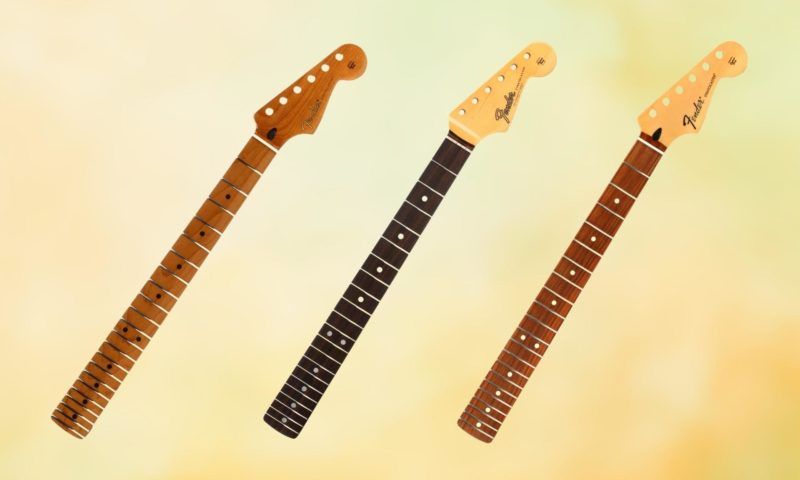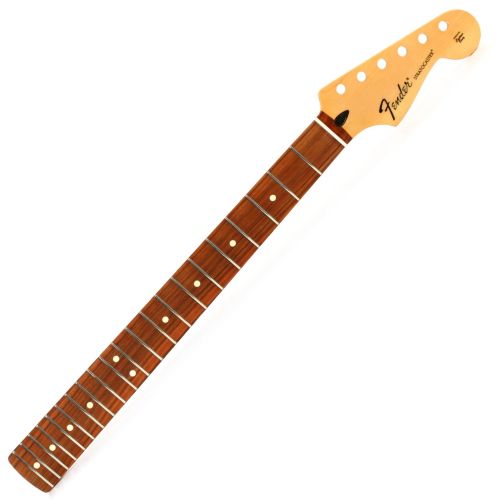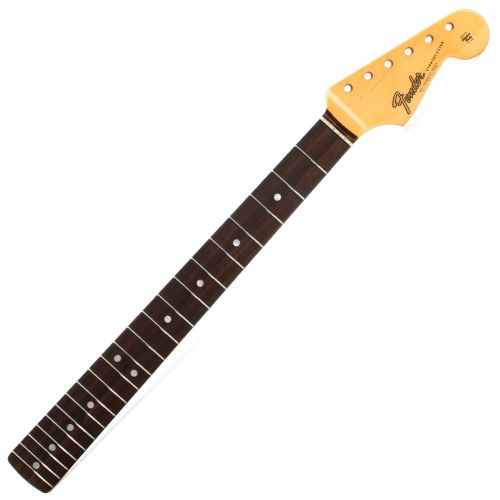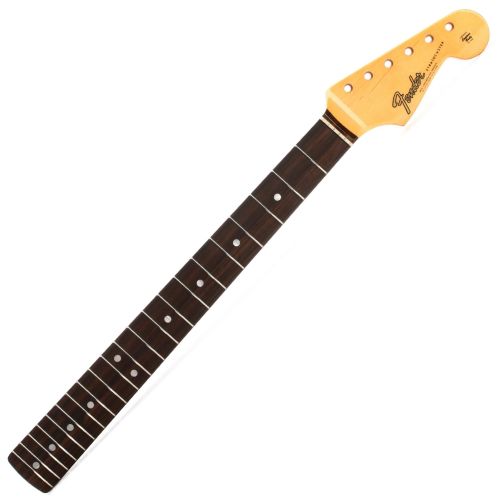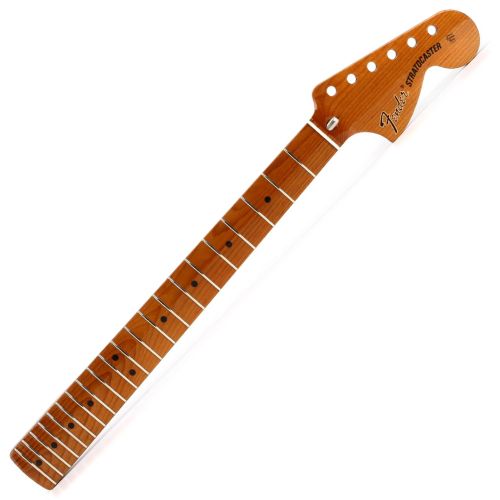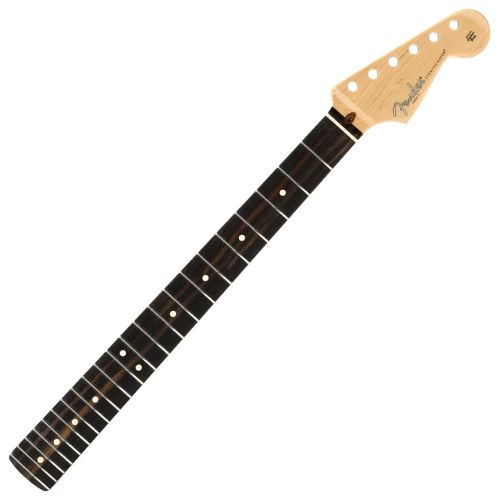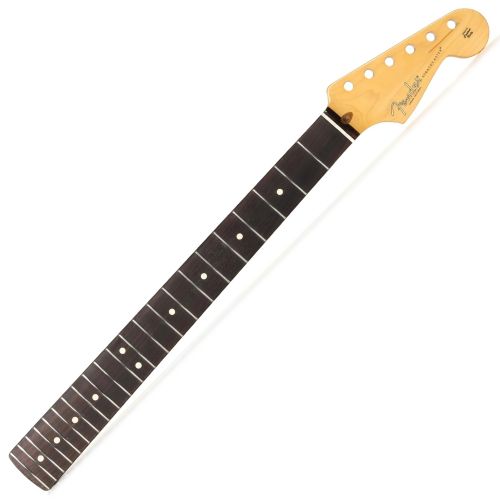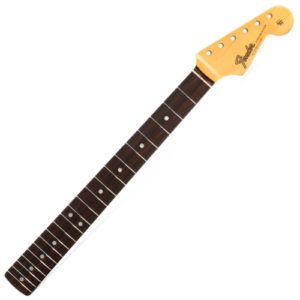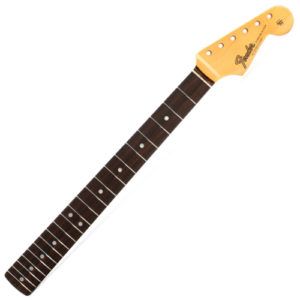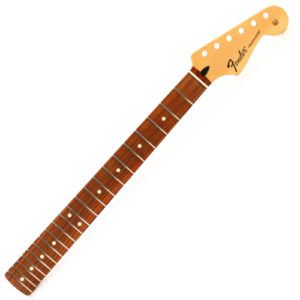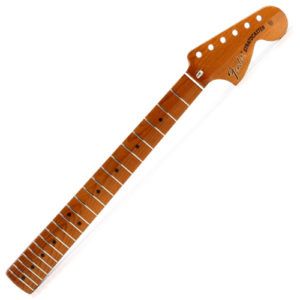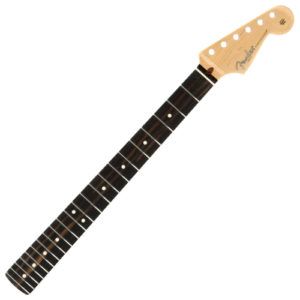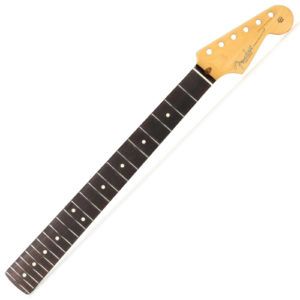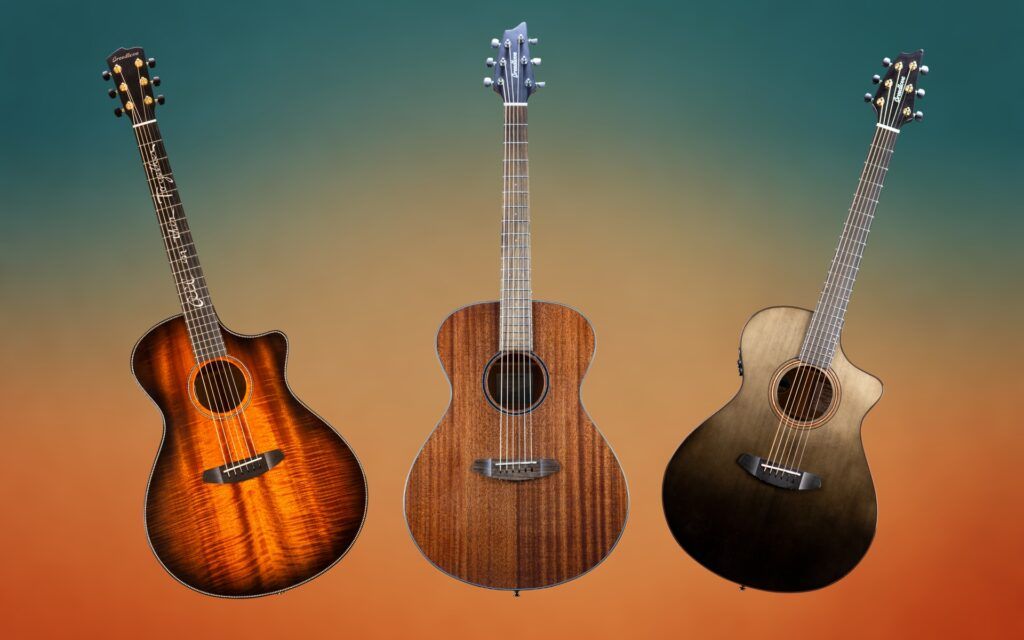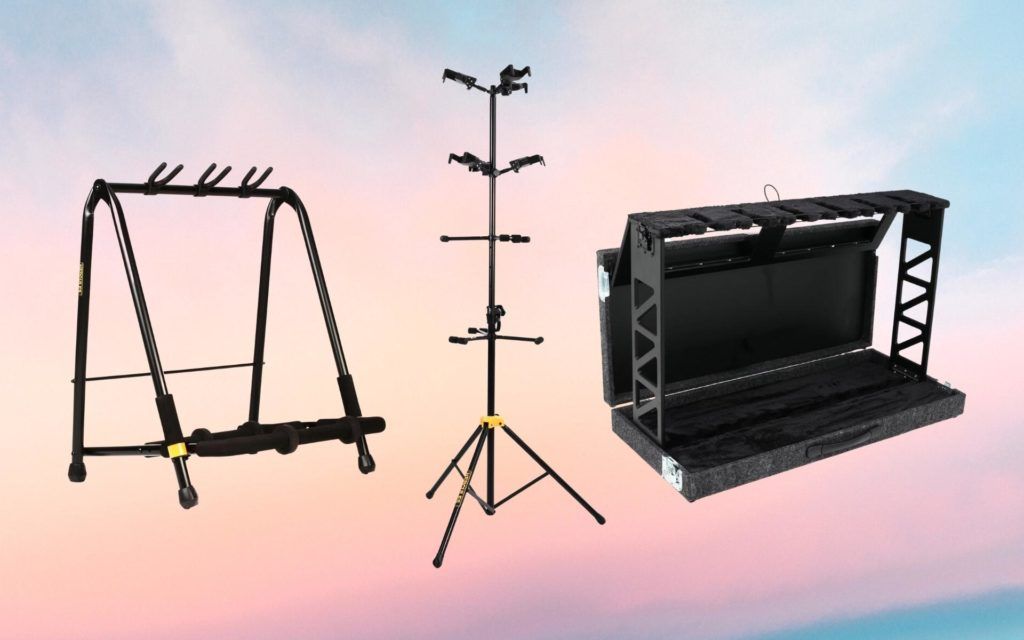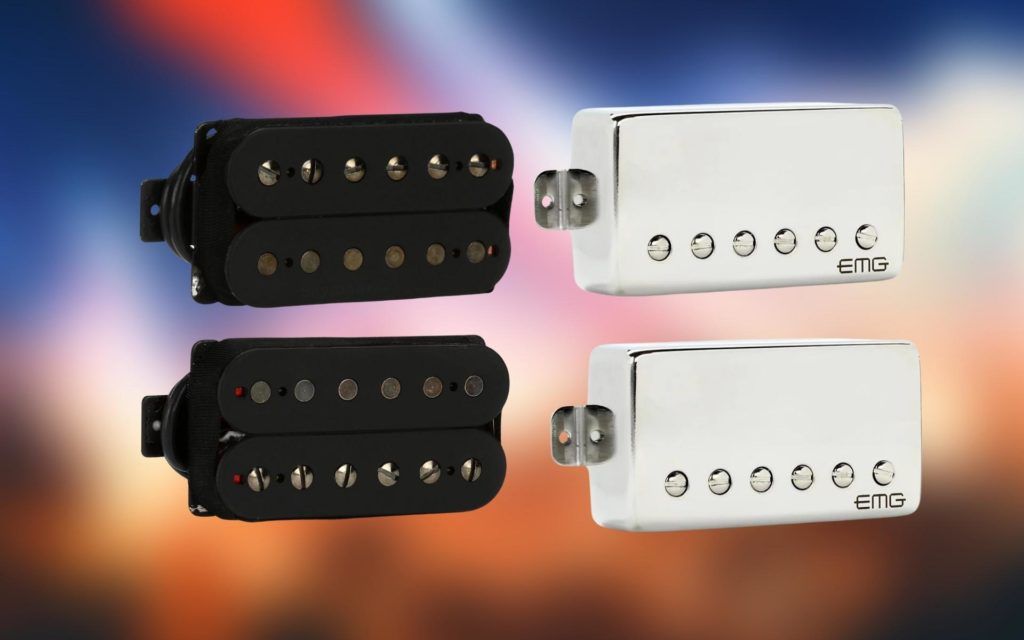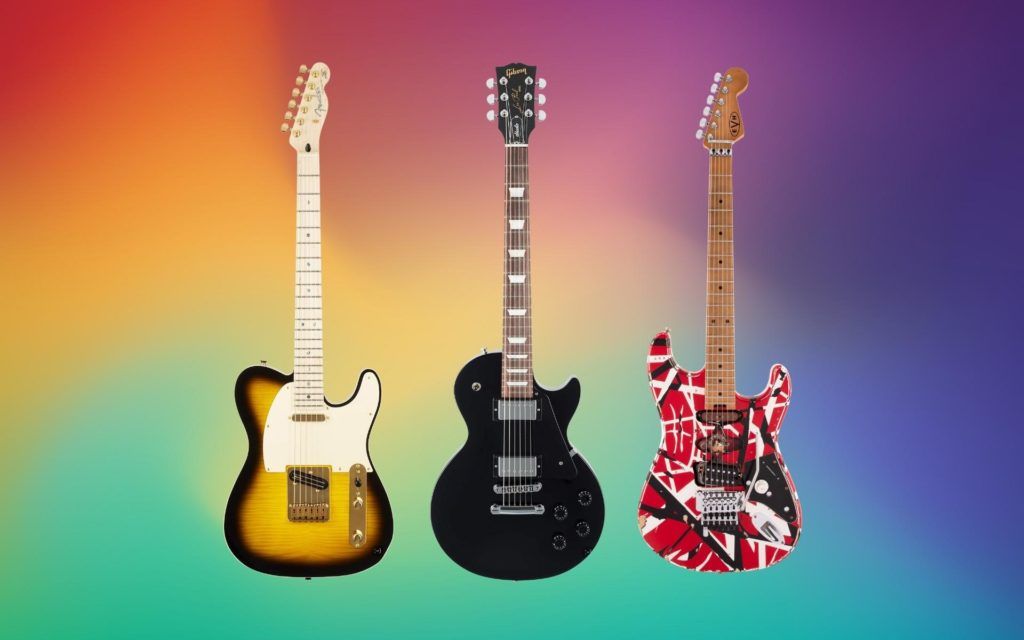We review products independently and our recommendations are genuine. If you purchase through links on our site, we may earn an affiliate commission. Learn More
If you’re looking to upgrade your Stratocaster, or you need to swap out the neck due to damage, a replacement Stratocaster neck can give the guitar a new lease of life.
The Fender Stratocaster has had a huge impact on the world of music since it was first released in the 1950s. This timeless solidbody guitar continues to be amongst Fender’s best-selling instruments in the modern era.
There comes a time when every guitarist considers replacing certain components on their instrument. This may be the pickups, tuning pegs, or a more structural change like the neck.
Whether you’ve damaged the neck on your Strat, or you simply want to upgrade to improve the playability and tone of your guitar, this guide will present you with a range of suitable options.
In a Rush Roundup
How We Tested
To identify the best necks for Stratocasters, we ran them through a series of tests. This included assessing the quality of the tonewoods used to construct the necks, along with the quality of other components like the nut.
Furthermore, we compared the robustness of the necks, their potential for longevity, and their impact on the sonic qualities of the Stratocaster, such as sustain, resonance, and tone
Best Replacement Strat Necks Reviews
Fender Roasted Maple Flat Oval Replacement Stratocaster Neck
Fender Roasted Maple Flat Oval Replacement Stratocaster Neck Review
With a flat oval profile, this Strat neck promotes fast, technical playing. The fingerboard is made from maple, which feels incredibly smooth and allows you to transition through the notes effortlessly.
Fender has subjected this maple neck to a roasting process, which has several benefits. Aesthetically, roasted maple looks slightly aged and worn, which will suit lovers of Vintage Strats perfectly.
It also makes the tonewood more resilient, preventing it from warping or being damaged by changes in temperature and air humidity. The maple is gradually heated up until an ideal level of dryness is reached.
With 22 jumbo-sized frets, this Fender maple Strat neck allows your fingers the space they need to bend strings or quickly move from note to note. It’s a great match for those who like to use a variety of chord shapes, inversions, and voicings.
The inclusion of a synthetic bone nut adds the finishing touches to this Strat neck, improving its ability to retain tuning. Finally, the pre-made grooves are compatible with any string gauge that you prefer to use.
Features
- Roasted maple neck
- Maple fingerboard
- Flat oval neck shape
Pros
- Great for fast playing styles
- Promotes technical chord shapes
- Compatible with all string gauges
Cons
- Fret edges feel a little rigid
Fender American Original ‘60s Stratocaster Replacement Neck
Fender American Original ‘60s Stratocaster Replacement Neck Review
There have been many variations of the Fender Stratocaster over the past seven decades or so, but the 1960s models stand out as some of the best. This American Original ‘60s Strat neck boasts a luxurious feel and an authentic, vintage appearance.
With a responsive rosewood fingerboard that consists of 21 vintage-tall frets, this neck is equally well suited to playing chord patterns or single-note melodies and riffs.
Fender has used a thick “C” profile for this neck, which is slightly more substantial than your average Strat neck. This shape is consistent with the necks used on Fender Stratocasters in the 1960s.
Rather than using the slab-board rosewood, Fender has opted for what is known as “veneer board” rosewood on the fingerboard. This design was used on most Stratocasters made around 1965.
To preserve the maple and ensure its smoothness, a coating of nitrocellulose lacquer has been added to the neck. This lacquer makes it easier to move up and down the fretboard at pace.
This neck is a perfect fit with Fender’s “Pure Vintage” tuners, which are used on many of their era-specific Stratocasters.
Features
- Maple neck
- Rosewood fingerboard
- Thick “C” neck profile
Pros
- Very easy to install
- Vintage tall frets support all styles of playing
- Authentic ‘60s appearance
Cons
- Less well suited to fast playing
Fender Standard Series Stratocaster Replacement Neck
Fender Standard Series Stratocaster Replacement Neck Review
With its modern “C” profile, the Fender Standard Series Stratocaster neck is a great choice for guitarists looking to upgrade the feel of their instrument without spending too much.
Made from maple, the offering is amongst the best Strat replacement necks. It fits into the fretting hand perfectly without any tension and makes switching between chord shapes simple.
Due to the neutral, classy appearance of this neck, it will slot onto most Stratocasters without looking out of place. The fingerboard is made from pau ferro, which has emerged as a popular alternative to rosewood and maple in recent years.
With a total of 21 medium-jumbo-sized frets, there’s an abundance of space for you to perform bends and other techniques on your Strat. The white dot inlays add a vintage touch to the neck and improve the visibility of the notes.
Fender has finished this neck in satin urethane, which further improves its playing comfort. They’ve also pre-installed holes ready for the tuning machines, so you won’t need to make any modifications to the neck or your guitar when installing it.
Features
- Maple neck
- Pau Ferro fingerboard
- Modern “C” neck profile
Pros
- Effortlessly fits into the fretting hand
- Supports fast transitions
- Smooth, responsive fingerboard
Cons
- Modern design departs from vintage Fender style
Fender Vintera Mod ‘70s Stratocaster Roasted Maple Neck
Fender Vintera Mod ‘70s Stratocaster Roasted Maple Neck Review
Made from roasted maple, this vintage-style Strat neck looks as good as it feels. The ‘70s “C” profile allows your fretting hand to cup the neck easily, reducing the chance of fatigue when playing chords.
Fender has based the design of this neck on those found on their Vintera Strats from the 1970s, a decade that many consider being the most innovative period for guitar manufacturing.
The slightly worn, aged look of the roasted maple gives this neck an authentic appearance. It also makes it more robust, preventing it from warping or becoming damaged when exposed to different temperatures.
This Fender Vintera Mod ‘70s Stratocaster neck also comes with a sturdy truss rod which is responsible for keeping the intonation on point and improving tuning stability. The rod is pre-installed and will ensure the longevity of the neck.
Roasted maple has also been used for the fingerboard, which is coated in nitro gloss, ensuring a smooth feel which is nicely contrasted by the slightly rougher backside of the neck.
Features
- Roasted maple neck
- Roasted maple fingerboard
- Early ‘70s “C” neck profile
Pros
- Great for rock n’ roll guitar playing
- Classic neck shape and feel
- Enhances sustain
Cons
- May look out of place on a modern Strat
Fender Limited Edition American Professional Strat Neck
Fender Limited Edition American Professional Strat Neck Review
This limited edition Fender neck replacement features an eye-catching streaked ebony fingerboard. Compared to other popular fingerboard materials like rosewood and maple, ebony feels slightly rougher, providing more grip.
The extra grip makes it easier to form chord shapes with your fingers and improves the accuracy of your fingertip placement when navigating the frets. Furthermore, it gives the neck a distinguished appearance.
Made in Fender’s US factory where their high-end American guitars are manufactured, this neck has a deep “C” profile, which is a middle ground between conventional “C” and vintage “U” style necks.
The 22 frets are of the narrow-tall variety, meaning they provide ample room for note bends and playing chords. These frets also help to retain the guitar’s intonation for long periods, even if you play extensively.
Fender has added more maple towards the neck end, mainly because this allows more vibrations to be transferred through the tonewood and into the pickups.
If you’re looking for a Fender Strat replacement neck that will make your guitar more resonant, this is a great choice.
Features
- Maple neck
- Streaked ebony fingerboard
- Deep “C” neck profile
Pros
- Blends traditional “U” and Modern “C” neck feel
- Improves dynamic control
- Enhances intonation
Cons
- Narrow tall frets may be unsuitable for people with large fingers
Fender American Professional II Stratocaster Neck
Fender American Professional II Stratocaster Neck Review
Upgrading your Strat’s neck should improve three key areas of the guitar – its appearance, playing comfort, and sound. The American Professional II neck enhances all of those attributes significantly.
Unlike most of the neck features on this list which are generally inspired by vintage models, the American Professional II neck has more of a modern look and feel to it.
When constructing this neck, Fender used only the finest materials and components. The bulk of the neck is made from maple, with a satin finish that makes it feel irresistibly smooth in your hand.
For the fingerboard, Fender opted for rosewood. This tonewood is used on their high-end Stratocasters, Telecasters, Jazzmasters, and Jaguars. It improves the sustain of the guitar and is very comfortable to play.
The inclusion of a synthetic bone nut ensures that the intonation and tuning stability of your telecaster will also be improved, and this component also adds an elegant touch to the neck’s design.
This neck has a deep “C” profile, which is ideal for playing fast, technical riffs. Whether you like to shred out solos on your Strat, or you prefer to use it for more melodic purposes, this neck will perform well in both roles.
Features
- Maple neck
- Rosewood fingerboard
- Deep “C” neck profile
Pros
- Simple installation
- Improves the playing comfort of your Strat
- Enhances resonance
Cons
- Less suited to heavy guitar styles
Strat Neck Replacement Buyer’s Guide
Replacing Strat necks can give the guitar a new lease of life. Many guitarists don’t realize how easy it is to replace the neck of their instrument when in reality it doesn’t require any previous experience or serious modifications.
This guide was written to help you find the best replacement neck for Stratocasters, and to help you avoid choosing an unsuitable or sub-standard option.
Things to consider when buying
Consider the style of your Strat
Over the years, Fender has released many different variations of the Stratocaster. If your guitar is modeled on a specific era, such as the ‘60s or ‘70s Strats for example, then you’ll probably want to choose a replacement neck that suits the aesthetics.
Think about the fingerboard material
The wood type that is used to construct your fingerboard will significantly impact the way your Strat plays and sounds. Rosewood fingerboards offer excellent sustain and smoothness, maple is great for fast playing, and Pau Ferro is a more affordable alternative.
Decide which neck profile you need
When deciding which replacement Strat neck to choose, it’s very important to consider the different neck profiles. Guitarists with smaller hands may prefer a profile like the modern “C”, while those who enjoy a thicker-feeling neck should consider a flat oval or thick “C” profile.
Identify the ideal fret size
Stratocaster necks are available with varying fret shapes and sizes. These include narrow-tall frets, which are great for lead guitarists, or vintage jumbo frets, which are well suited to plating chord patterns.
How a Neck Can Improve Your Stratocaster
Even if you have the finest pickups installed on your Stratocaster, with a high-end amplifier and a huge selection of boutique effects pedals, the guitar will not perform to the best of its abilities unless you choose the ideal neck.
A Strat’s neck is as just as essential as any other component, and it impacts everything from the vibrational transfer of the strings, to finger placement and playing comfort.
Despite its undeniable importance, the neck is often one of the last things that a Strat player considers upgrading to improve the sound and playability of their instrument.
If you’re hoping to enhance the existing qualities of your Stratocaster, or you need to replace the neck due to the old one breaking or becoming faulty, it’s vitally important to know what you’re looking for.
Choosing The Right Neck Profile
There are many things to consider when selecting a neck replacement for your Strat, but one of the most important is which profile best suits your playing style.
The neck profile simply means its shape and thickness. There are many variations of neck profiles available, but the three most common that are used on Fender guitars are:
- “C” Shape
- “V” Shape
- “U” Shape
The “C” shape is by far the most common choice for modern Stratocasters and similarly designed guitars. These necks have an oval profile, which is comfortable and a safe choice for guitarists who like to switch up their playing style.
Some Strat necks have what is known as a “flat oval” profile, which is essentially a modern version of the traditional “C” neck shape, with a more flattened design.
“V” shaped necks were more commonly used on vintage Stratocasters, and some guitarists still prefer the old-school feel they provide. These necks are more pointed than the other varieties and are particularly useful if you like to play bass notes with your thumb when forming chord shapes.
The final variation of Strat necks, which is less common than the “C” and “V” profile is the “U” shaped neck. As you can probably guess, these necks are thick and rounded and are therefore a good choice for guitarists with larger-than-average hands.
Neck Materials and Build Quality
Most Fender-made Strat necks are made from maple, which is a reliable material renowned for its longevity and bright tone.
Maple is dense and hard, which makes it less likely to warp over time. Therefore, investing in a neck that is made from this material will ensure that you don’t need another replacement providing you take good care of it.
Fender also commonly subjects the maple neck to a roasting process, which involves heating up the wood to extract all of the moisture or oils that are in it, thus making it even harder and more durable.
If your Stratocaster is likely to be subjected to temperature changes, I would recommend considering a roasted maple neck as they are more resistant to this.
Don’t Forget The Fingerboard
When you invest in a replacement neck for your Strat, you’re also choosing a new fingerboard. The combination of materials that are used to construct these two parts of the guitar will alter both the way it sounds and feels when you’re playing.
Strat fingerboards are most commonly made from one of the following materials:
- Rosewood
- Ebony
- Maple
- Pau Ferro
Rosewood is arguably the most reliable choice. This material is not overly hard and produces a balanced tone that suits most playing styles.
Ebony is considerably harder than rosewood but produces a more snappy tone with prominent high-end frequencies.
Strat Replacement Necks FAQs
Are Fender Maple Necks Usually Finished?
The majority of Fender’s maple necks are finished either with polyester or polyurethane. These finishes are chosen because they both provide a protective layer to the maple.
Another reason that Fender’s necks are finished is that it helps to preserve the appearance of the maple tonewood material so that they can last for many decades.
Are Roasted Guitar Necks More Stable?
Roasted maple necks are commonly used by Fender on their Stratocasters. While some guitarists may be skeptical as to whether roasting the wood makes any difference, there is evidence to suggest that it does indeed improve stability and durability.
In addition to hardening the maple, roasting gives the neck a slightly darker color and prevents it from being easily warped due to changes in temperature or humidity.
Are Tele and Strat Necks the Same?
Fender’s two most popular guitars, the Stratocaster and Telecaster, share some similarities. The necks of both guitars are of the bolt-on variety, and for the most part, they have 22 frets with a scale length that measures 25.5 inches.
However, there are some key differences between the necks of these two solidbody axes. Firstly, the Stratocvaster’s headstock is considerably bigger than that of the Tele. Also, the Tele has a different-shaped neck heel with squared corners, while the Strat has a rounded heel.

